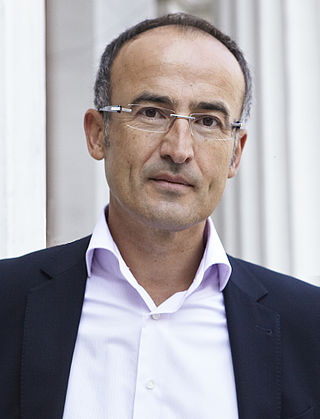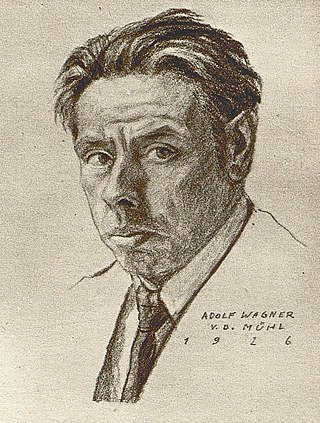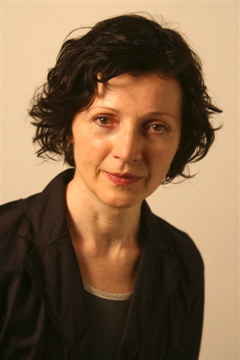Biography
Michael John finished his high school education 1971 with the Matura at the so-called "Academic" Gymnasium in Linz, and studied from 1972 to 1980 History und Political science at the University of Vienna. During his studies he turned to Social and Economic history, and graduated 1980 as Ph.D. with a thesis on housing of the working and lower classes in Vienna around 1900 (see John 1982, John 1984). [1]
He started his scientific career 1985 at the Institute for Social and Economic History (University of Vienna), and continued it 1986 at the Institute for Social and Economic History at the University of Linz. There he advanced from Assistant professor (1993) to Associate professor (2001, after his Habilitation with a study on the population of Linz in the 19th and 20th century as result of national and international migration, see John 2000). He was deputy head (2008-2014, 2017–2019) and head (2015-2017) of the Institute of Social and Economic History at the University of Linz.
Michael John 2011 – 2019 was also head of the Institute of Cultural Economics and Cultural Research (Institut für Kulturwirtschaft und Kulturforschung (KUWI) at the University of Linz). [2]
He was also guest professor at the University of Salzburg (1992), at the Central European University Budapest (1995), the Slovenian Academy of Sciences and Arts Ljubljana (2001), and the University of Nova Gorica (School of Humanities, Cultural Studies) (2004). [3]
Research focuses
Michael John concentrated his historical research on several focuses, which he treated not only by scientific research, but also by Applied history, curating exhibitions on relevant themes. See here the main focuses:
Michael John has conducted intensive research on Nazism, especially on the history of Aryanization, on aspects of Nazi plunder, with focus on plundered/ looted art and its restitution from the property of Austrian museums (see here John 2012b, John 2007a, John 2004a). Here he also studied aspects of forced labour under Nazi rule (see f.e. John 2012a). He curated an exhibition on the topic of forced labor (see exhibition 2014).
In the context of Nazism-research in Austria Michael John did studies on Jewish persecution and the History of Jews in Germany and in Austria 1933 - 1945 (see John 2021a, John 2014a). He did also investigations on general Jewish migration in the Austro-Hungarian Empire before 1918 (see here f.e. John 2011, John 1999a). Additionally he studied the emigration of Jewish people after the Holocaust and World War II to Israel, the United States and other areas (see here f.e. John 2002b). Here he curated (with Albert Lichtblau) an exhibition on the Righteous Among the Nations of Austria, exhibition 2015–2021.
Michael John did several studies on aspects of migration within and from Europe (see here f.e. John 2014b, John 1996a). He researched aspects of immigration to Vienna (see f.e. John 2019a, John 1990) and to Linz (see f.e. John 2000, John 1995) in the 19th and 20th century. Later he concentrated on Labour migration to Central Europe from a European "fringe" (like Yugoslavia, Greece, Italy or Turkey; (see f.e. John 2004b, John 2003). Here he also curated exhibitions, like „Gekommen und Geblieben: 50 Jahre Arbeitsmigration in OÖ. [They came and stayed: 50 years of labour migration in Upper Austria]“ (exhibition 2014–2018), [4] "Crossing Borders" (exhibition 2004), [5] or Migration - eine Zeitreise nach Europa [Migration - A Time Travel to Europe]
Here Michael John did research on the housing of lower/ working classes in Vienna around 1900 (see John 1982, John 1984), and studied the Demographic history of Linz as immigration city (see here John 2000, John 2015). This focus on Urban history was also the center of curating the 2021 Upper Austrian Federal State Exhibition [Oö. Landesausstellung 2021] in Steyr („Arbeit - Wohlstand - Macht“ [Work - Prosperity - Power]) co-curated by Michael John (see John 2021, exhibition 2021).
Michael John worked here in several studies and publications primarily on the history and social meaning of Soccer in Austria and Germany (see f.e. John 2008, John 1997). He additionally did research on the history of Consumerism (see f.e. John 2010, John 2001a) and on the history of Mobilities. Here he curated an exhibition „Fussball: Geschichten & Geschichte [Soccer: stories and history]“ (exhibition 2008). [6]
- History of Abuse in Youth Welfare, Childcare and Children's/ Youth homes in Austria
Michael John was member of several Austrian commissions of historians to examine child and youth abuse in Austrian children's and youth homes (Borstals, like Linz-Wegscheid, Steyr-Gleink, or Vienna, Schloss Wilhelminenberg#child abuse scandal) (see John 2006, John 2018). Here extensive and severe abuse of children and youngsters was proved. He also organized an exhibition in this context = Exhibition on the History of the Upper Austrian Youth Home in Linz-Wegscheid (exhibition 2006) [7]
This page is based on this
Wikipedia article Text is available under the
CC BY-SA 4.0 license; additional terms may apply.
Images, videos and audio are available under their respective licenses.











